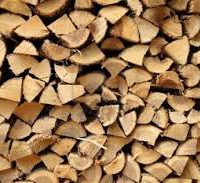This past November, my Husband and I moved into a rural home that is heated primarily with a wood boiler system. Having never burned wood to heat a home before, I would be lying if I said that we weren’t just a tad bit unsure as to what exactly to do, and how to do it properly. I quite frankly was pretty darn nervous. How we learned was through about a good month of trial and error, in conjunction with my Dad’s trusty advice; thank goodness for Dad’s!
I wanted to share with you some of the things we have learned along the way, in terms of heating your home with wood.
1. There is no ‘Right Way’ to Build a Fire
This has been one of the biggest things that I have learned. When you talk to people about burning wood, everyone seems to have their own unique style or technique. You will also find that each of these people believe that their technique is the only way, the ‘right’ way. Their techniques are all different, and yet many of them seem to have the same result. This has led me to understand that there is no ‘right way’ to build and maintain a fire. Do some research of your own, and experiment a bit with your stove. Get to understand what works for your stove, in which type of conditions, and what you are most comfortable with. The key outcome is that you achieve a nice, hot, clean burn.
2. Burn it Hot and Burn it Clean
The idea is that you want to maintain a nice, hot, efficient fire. What you absolutely don’t want is a smoky, smouldering fire. Black smoking wood in your firebox results in loading your chimney up with creosote. I don’t think you want to be cleaning your chimney every other week all winter long, so avoid this at all costs. Your fire needs a certain amount of oxygen to achieve a clean burn, and you will find what works best for your stove. Keep your fires smaller and hotter, and you will be using your wood as efficiently as possible while avoiding lining your chimney with creosote.
3. Better to have Too Much, than Not Enough
Sadly, we are just learning this last point now. This winter has been much longer and colder than the past several winters in Thunder Bay. Many people have doubled and tripled their typical wood usage, and as I drive around showing homes, I am noticing that most everyones wood buildings and shelters are running pretty low. Hopefully spring comes soon. It is imperative that you burn dry and well seasoned wood, and this means planning ahead. Right now, there is very little if any dry and seasoned wood to be had in Thunder Bay. Plan ahead; try to have at least 2 years worth of wood at the beginning of winter, keeping in mind that half of this wood needs to be dry enough for you to burn right away.
Obviously, I am still very much a newbie when it comes to heating my home with wood, and I am sure that these suggestions will seem very basic to the more experienced ‘wood burners’ out there. On the other hand, if you are new to burning wood- I hope that you found these suggestions helpful!


No comments yet.